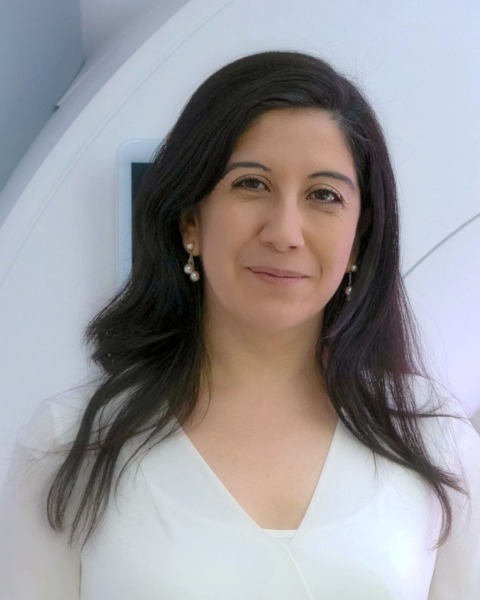Rapid Fire Abstracts
High-resolution anatomical bright- and black-blood whole-heart MRI with joint T1/T2 myocardial tissue mapping at 0.55T (RF_TH_281)
- IK
Ivan Kokhanovskyi, MSc
PhD student
Klinikum rechts der Isar, Technical University of Munich, Germany - IK
Ivan Kokhanovskyi, MSc
PhD student
Klinikum rechts der Isar, Technical University of Munich, Germany 
Carlos A. Castillo Passi, PhD
Research Engineer
Pontificia Universidad Catolica de Chile, Chile- MC
Michael G. Crabb, PhD
Research Associate
King's College London, United Kingdom - KK
Karl P. Kunze, PhD
Senior Cardiac MR Scientist
Siemens Healthineers, United Kingdom - DK
Dimitrios Karampinos, PhD
Scientist
Klinikum rechts der Isar, Technical University of Munich, Germany - MM
Marcus Makowski, PhD
Director of department
Klinikum rechts der Isar, Technical University of Munich, Germany 
Claudia Prieto, PhD
Professor and Director for Research and Innovation
School of Engineering, Pontificia Universidad Católica de Chile, Chile
Rene Michael M Botnar, PhD
Director and Professor
Institute for Biological and Medical Engineering
UC Chile, Chile
Presenting Author(s)
Primary Author(s)
Co-Author(s)
Bright-blood MRI is the reference standard for imaging cardiac structures and coronary arteries, whereas black-blood excels in visualizing the myocardium, atrial and vessel walls. Additionally, quantitative myocardial tissue characterization provides valuable information on the presence of myocardial fibrosis, oedema, or inflammation. Recent advances in low-field MRI offer new perspectives to make it more accessible and affordable1,2. In this study, we propose a free-breathing, motion-compensated 3D multi-contrast sequence for simultaneous assessment of whole-heart cardiovascular anatomy via bright- and black-blood imaging and myocardial tissue characterization by joint quantification of T1 and T2 values at 0.55T.
Methods:
The ECG-triggered research sequence consists of six heartbeats (HBs) with different preparation pulses (Fig.1A). Images were acquired at 0.55T (MAGNETOM Free.Max, Siemens Healthineers, Erlangen, Germany) with a variable flip angle bSSFP readout in coronal orientation. Low-resolution 2D iNAVs were obtained prior each HB for translational motion correction and respiratory binning of 3D data3. A variable density 3D Cartesian spiral-like k-space trajectory was employed to collect 5x undersampled data at 100% respiratory efficiency4 (Fig.1B). Images were reconstructed with 3D non-rigid motion-corrected iterative SENSE, followed by patch-based low-rank denoising5 (Fig.1C). The 1st volume provides a bright-blood image, while the black-blood volume is obtained by subtracting the 1st dataset from the 2nd. Joint T1/T2 maps were generated voxel-wise by matching the measured signal to an EPG-based dictionary. The proposed sequence was validated in the phantom and 4 healthy subjects (27±3 years, 1 female, HRs of 56-61 bpm).
Results:
In the standardized T1-MES phantom, good agreement was observed between the proposed 3D joint T1/T2 mapping sequence and 2D spin-echo reference mapping sequences (Fig.2). Reformatted views from the bright-blood contrast images show a clear depiction of the coronary arteries with high vessel sharpness (Fig.3A). Mid-cavity anatomical bright- and black-blood short-axis images provide good delineation of cardiac structures, while co-registered joint T1/T2 maps enable simultaneous quantitative tissue characterization (Fig.3B). 3D bulls-eye plots averaged across all subjects provide mean and standard deviation values of T1=654±39ms and T2=58.6±3.3ms for the whole left ventricle (Fig.3C), which are comparable to the literature2 at 0.55T (T1=701±25ms, T2=58±6ms). To assess the segment variability of the proposed mapping sequence, the violin plot analysis was performed separately for the apical, mid-cavity, and basal regions as well (Fig.3D).
Conclusion:
The proposed 3D whole-heart multi-contrast sequence allows acquisition of high-quality bright- and black-blood volumes and co-registered joint T1/T2 maps in a single 15-minute scan at 0.55T. Preliminary results demonstrate good agreement with reference T1/T2 values in the T1-MES phantom and promising results in healthy subjects. Future work will focus on shortening scan time and validation on a larger cohort of healthy subjects and patients with suspected cardiovascular disease.

